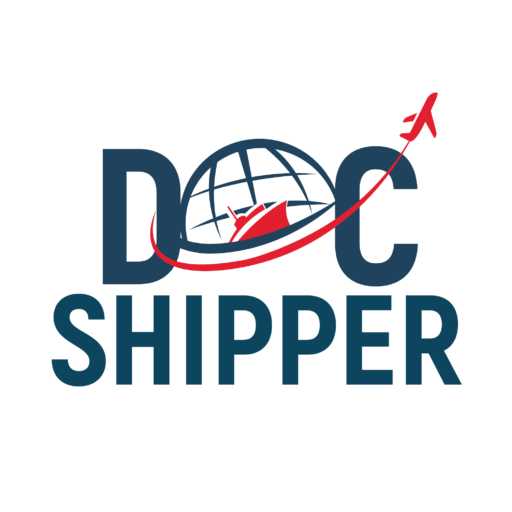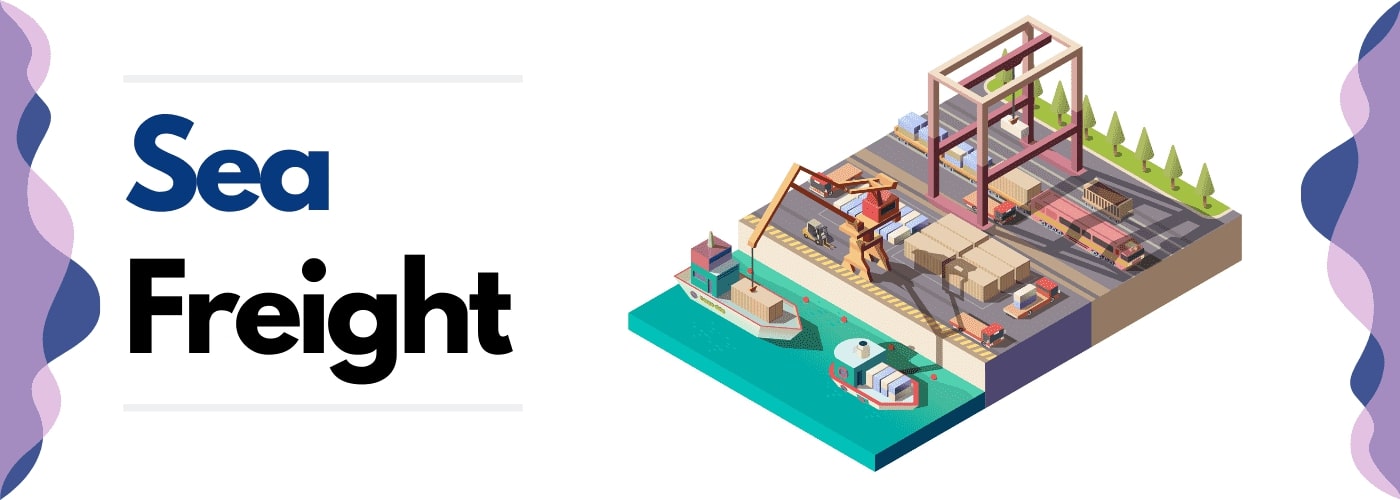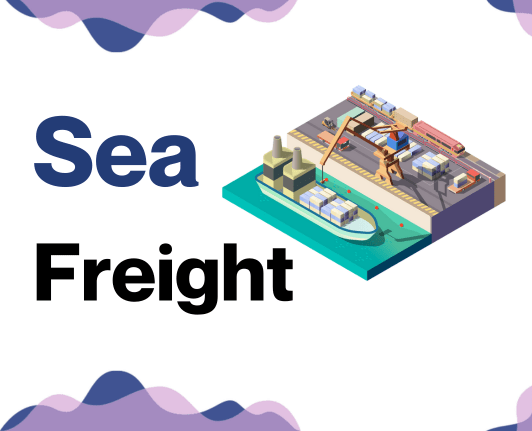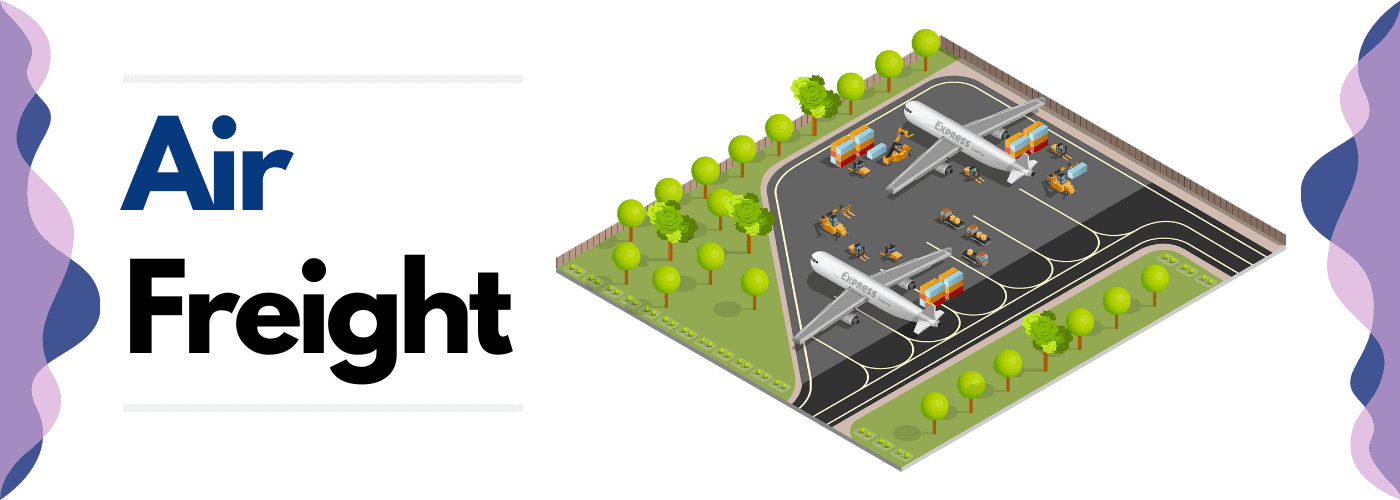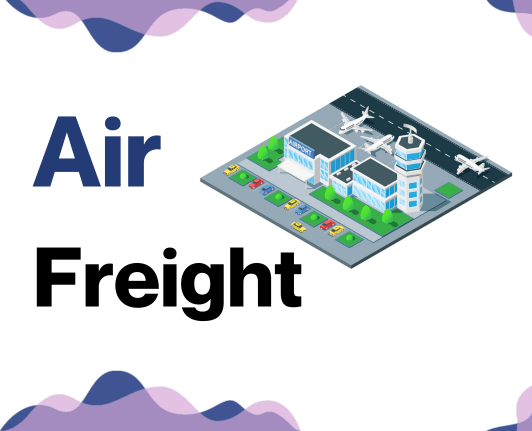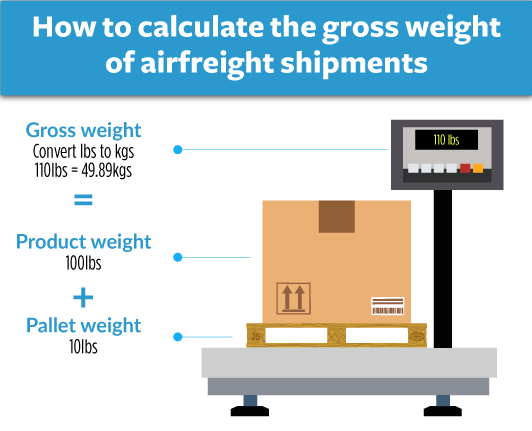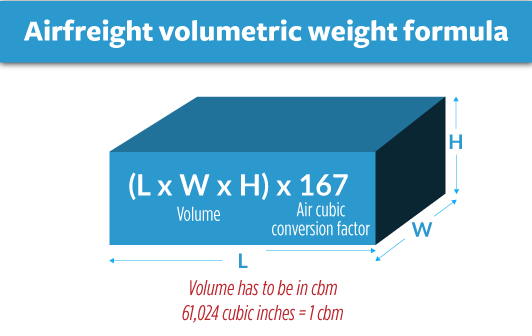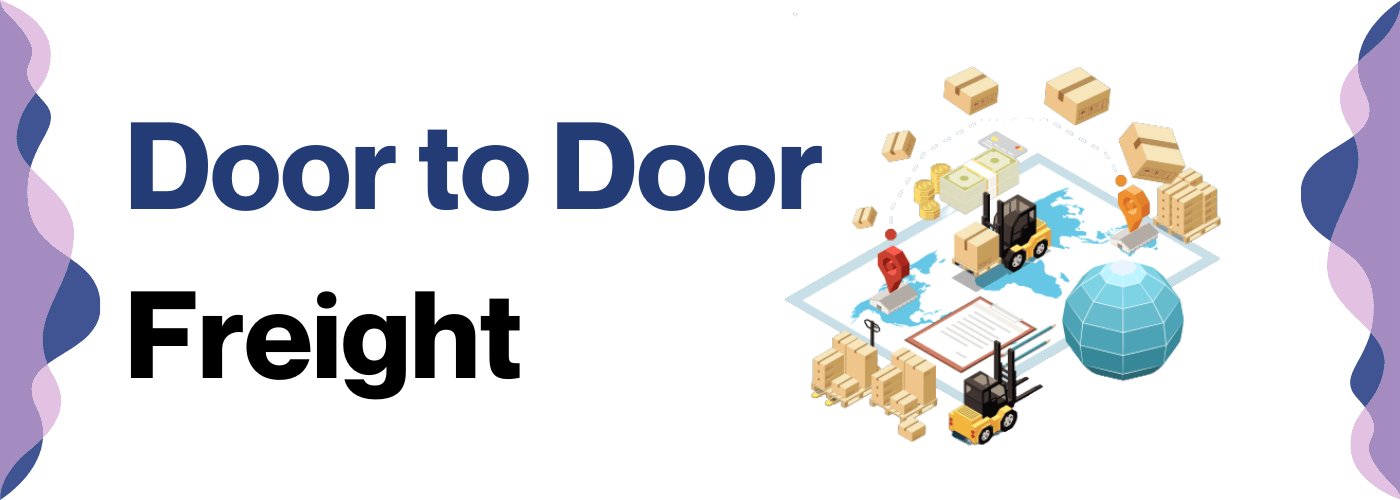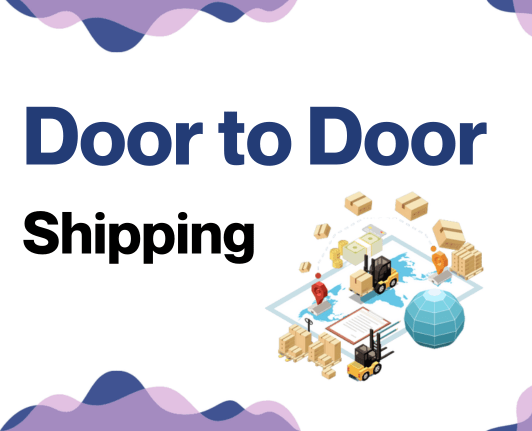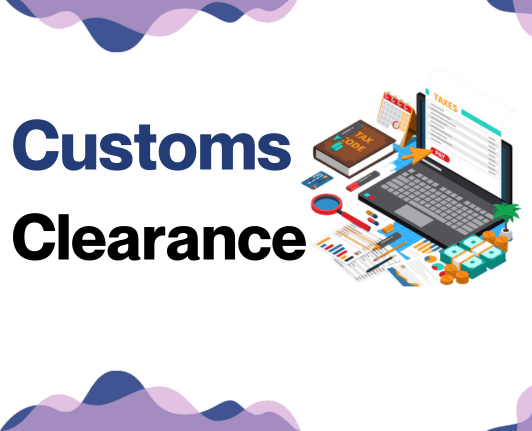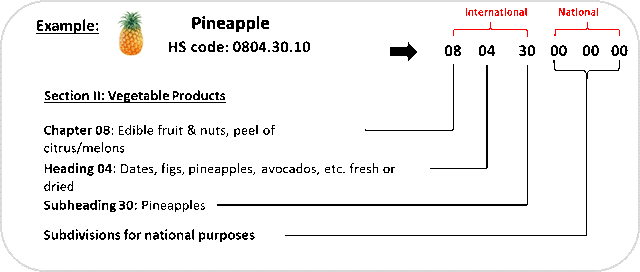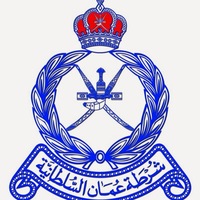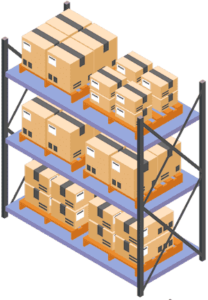Why did the package go to Oman instead of Qatar? Because it didn't take the right route! Jokes aside, the complexities of understanding rates, transit times, and customs regulations can often leave businesses feeling lost and frustrated.
This comprehensive Destination Guide is tailored for businesses seeking clarity and direction in their freight transport from Qatar to Oman. Explore a different freight options – be it air or sea, whilst gaining in-depth knowledge on customs clearance, duties, taxes, and more.
This guide is here to demystify the process and arm you with the necessary insights to streamline your shipping journey. If the process still feels overwhelming, let DocShipper handle it for you! As a seasoned international freight forwarder, we manage every step of the shipping process, turning those daunting challenges into successful business ventures.
Table of Contents
Which are the different modes of transportation between Qatar and Oman?
Understanding the perfect way to transport goods between Qatar and Oman feels a bit like choosing the right vehicle for a road trip. You have a short distance and a direct route, thanks to no-international borders separating these close neighbors. Speed, cost, and type of cargo come into play here.
It's just like picking between a sleek sportscar for lightning-fast delivery, or a sturdy truck for carrying bulky items. Think sea freight for heavy shipments, road for rapid delivery or cost-effectiveness, or air for urgent, time-sensitive cargo! The right choice can streamline your business traffic on this specific 'desert highway'.
How can DocShipper help?
Need to ship goods from Qatar to Oman? DocShipper is your ally. With our industry expertise and vast network, we efficiently manage everything from transport to customs clearance. Don't get lost in the complex world of freight forwarding. Click here for a free estimate. Got a question? Our consultants are just a call away. Simplify shipping with DocShipper.
DocShipper Tip: Sea freight might be the best solution for you if:
- You're dealing with hefty quantities or large-scale goods. Sea freight is your go-to for maximizing space without stretching your budget.
- Your cargo doesn't have an urgent deadline, as sea freight typically has longer transit times compared to air or rail.
- Your shipping routes are between major ports, allowing you to leverage the extensive global network of sea shipping lanes.
Sea freight between Qatar and Oman
Complexity, challenges, and hidden snags - these are what many businesses face when shipping between the always-humming harbors of Qatar and Oman. United by the ocean, these nations share a bustling trade alliance, with the high-volume docks of Port of Sohar in Oman and Hamad Port in Qatar playing starring roles in this dramatic seafaring tale.
You might think ocean shipping is a walk in the park - just load, sail, and unload, right? But, it's more like a chess game, each move meticulously calculated. While sea freight, the tortoise of the transport world, is undeniably kind to pockets transporting high-volume goods, it comes with its fair share of puzzles to solve.
In the winding turns of international shipping, businesses often stumble over bureaucratic barriers, cryptic customs, and tricky transport schedules. But don’t be disheartened! This guide views those same hurdles through a different lens, where simply knowing the 'rules of the road,' can make the journey smoother.
Get ready to decode the complexities and unlock a world of efficient shipping between Qatar and Oman. Stay tuned to delve into the hows and whys, the dos and don'ts, in the riveting saga of ocean shipping. Buckle up, it’s going to be an enlightening voyage!
Main shipping ports in Qatar
Port of Hamad
Location and Volume: Located just around 25km north of Doha, the capital of Qatar, the Port of Hamad is the main gateway for international maritime trade with Qatar, boasting a shipping volume of over 1 million TEUs per year.
Key Trading Partners and Strategic Importance: The Port of Hamad has a significant role in boosting Qatar's trade with key regions such as South Asia, Europe, the Americas, and East Africa. It is strategically situated to serve the Gulf Cooperation Council (GCC) countries and serves as a transshipment center for a large portion of the region's trade.
Context for Businesses: If you're looking to reach markets within the Middle East, particularly the Gulf region, the Port of Hamad can provide a strategic advantage. Its advanced infrastructure, alongside its impressive connectivity and trade networks, can facilitate your efficient engagement with regional economies.
Doha Port
Location and Volume: Situated in the heart of Doha, the Doha Port was the principal maritime gateway to Qatar until the establishment of Hamad Port. It now primarily handles cruise vessels, though it does handle a limited volume of commercial cargo.
Key Trading Partners and Strategic Importance: The Doha Port secures nation-wide supplies by maintaining connections with regional partners. The strategic transformation of Doha Port into a cruise ship terminal fits the vision of making Qatar a leading cruise ship destination.
Context for Businesses: Although Doha Port may not be your standard cargo port, its focus on cruise vessels presents opportunities for businesses involved in tourism and related industries. As Qatar continues to attract tourists, goods and services targeted towards this clientele could gain substantial traction.
Port of Mesaieed
Location and Volume: Situated on the south-eastern coast of Qatar, the Port of Mesaieed is primarily an industrial port and handles the exportation of Qatar’s petrochemical products. The port handles hundreds of thousands of metric tons of cargo annually.
Key Trading Partners and Strategic Importance: Serving key partners such as Japan, Korea, and India, the Port of Mesaieed carries strategic importance, being the key port for Qatar's industry-centric city, Mesaieed Industrial City.
Context for Businesses: If your operations heavily involve industrial exports, especially petroleum or petrochemical products, the Port of Mesaieed could be most suited for your needs. The port's particular focus on these products and its specialized facilities streamline the handling of such cargo. By using this port, your business can achieve efficient transportation of industrial goods to specific markets.
Main shipping ports in Oman
Port of Soha
Location and Volume: Located midway between Dubai and Muscat on the northern coast of Oman, the Port of Sohar is a fast-growing hub for global trade. As of 2023, the port has a shipping volume of over 800 000 TEUs.
Key Trading Partners and Strategic Importance: As a gateway to Gulf countries, and a critical hub in Oman's modernization efforts, the port has significant strategic importance. The key trading partners are Asian and African countries, such as China, India, and several East African nations.
Context for Businesses: If optimizing your logistics chain in the Gulf region is among your ventures, Port of Sohar may be well-suited to your business with its ongoing expansion plans and advanced logistics capabilities. Furthermore, its Freezone offers extensive opportunities.
Port of Salalah
Location and Volume: Situated in the Dhofar Governorate on the southern coast of Oman, the Port of Salalah is one of the busiest ports in the region, with a shipping volume of 3.7 million TEUs in 2023.
Key Trading Partners and Strategic Importance: This port's strategic location grants easy access to the Middle East, the Indian subcontinent, and East Africa, making it a critical stopover on Asia-Europe trade routes. The main trading partners include India, the United Arab Emirates, and Yemen.
Context for Businesses: For businesses seeking efficient logistics across various continents, the Port of Salalah’s outstanding connectivity can significantly improve your supply chain efficiency. This is particularly true if your market focuses on Asia, Europe, or Africa.
Port of Duqm
Location and Volume: Positioned in the south-central part of Oman, the Port of Duqm plays a crucial role in the aspiration to be a new logistic gateway between Asia and Europe. Despite being relatively new, this port handled more than 2 million tonnes of goods in 2023.
Key Trading Partners and Strategic Importance: Holding a strategic position, Port of Duqm links Oman's traditional partners like India and further afield to Western European countries.
Context for Businesses: If you're extending your trade network across Europe and Asia, the Port of Duqm, with its vast capacity and excellent infrastructural facilities, might be the right place for your shipping strategy. Its robust connectivity and customs-friendly policies ensure swift and easy freight handling.
Should I choose FCL or LCL when shipping between Qatar and Oman?
Choosing between Full Container Load (FCL) and Less-than Container Load (LCL), also known as consolidation, can feel like navigating a maze. Yet, this decision holds the key to profitable shipping from Qatar to Oman. Whether you're a startup dispatching your first shipment or a seasoned business, every choice counts.
Will it be consolidation for smaller, more regular consignments? Or FCL for large one-off shipments or sensitive goods? Up next, we dive into cost implications, delivery timelines, and much more as we unpack the pros and cons of FCL and LCL. Your voyage to effective decision-making starts here.
LCL: Less than Container Load
Definition: LCL (Less than Container Load) freight is a type of shipping method used when the cargo size does not require the full capacity of a container. It's advantageous as it allows businesses to share the container space with other shipments, resulting in a more cost-effective method.
When to Use: If your cargo is less than 13/14/15 CBM, LCL shipping is likely the most efficient and cost-saving choice. It's flexible and ideal for low volume shipments because it only requires payment for the space you use.
Example: Suppose you're a Qatar-based business exporting handicrafts to a client in Oman. Your shipment measures 10 CBM, making it a perfect fit for an LCL shipment. You pay for your 10 CBM, and other businesses fill up the remaining container space with their goods, hence sharing the shipping cost.
Cost Implications: Choosing LCL freight can significantly reduce costs for small to medium shipments. Rather than paying for unused space within a full container, with LCL, you're only billed for the exact space your cargo occupies. This economic efficiency makes the LCL freight method extremely popular among businesses with small freight sizes.
FCL: Full Container Load
Definition: FCL, or Full Container Load, refers to a method of shipping where the entire container is utilized by one consignee. In FCL shipping, you rent a 20 or 40'ft container exclusively for your goods.
When to Use: If your cargo volume exceeds 13-15 CBM, an FCL shipment might be the ideal option. It's generally cheaper for high-volume goods, and also guarantees the security of your freight since the FCL container remains sealed from origin to destination.
Example: Suppose you're a business dealing in heavy machinery parts, and you need to transport a large shipment from Qatar to Oman. Due to the bulk quantity and high volume (let's say 18 CBM), it would be more cost-effective and secure to use FCL shipping.
Cost Implications: Despite a higher initial FCL shipping quote, cost per unit is often less compared to LCL when dealing with large volumes. Different factors affect these costs such as the type of container (20'ft or 40'ft), distance, time of year, and fluctuating transportation rates. Therefore, it's important to procure an accurate quote before proceeding with FCL shipping.
Unlock hassle-free shipping
DocShipper, your trusty freight forwarder, is here to streamline your shipping needs between Qatar and Oman. Our ocean freight experts consider numerous factors like freight size, weight, and shipping timeline before advising on the best method, be it consolidation or full container. Say goodbye to the complexities and let us guide you towards a cost-effective and efficient solution. Ready to make your cargo journey easier? Reach out now for a no-obligation, free estimation.
How long does sea freight take between Qatar and Oman?
Typically, it takes between 3 to 7 days for sea freight to travel between Qatar and Oman. However, actual transit times can vary greatly and are dependent on factors such as the specific ports used, the weight and nature of the goods being transported.
For an accurate, tailored quote that considers these variables, we recommend reaching out to a freight forwarder like DocShipper.
| Qatar Ports | Oman Ports | Average Transit Time (days) |
| Hamad Port | Sultan Qaboos Port | 4 |
| Hamad Port | Sohar Port | 3 |
| Hamad Port | Salalah Port | 5 |
| Hamad Port | Duqm Port | 3 |
*Please note that actual transit times may vary.
How much does it cost to ship a container between Qatar and Oman?
Shifting a container from Qatar to Oman can feel like a puzzle, especially when it comes to costs. Ocean freight rates can swing broadly, from a few hundreds to the upper thousands per CBM.
This is because the final shipping cost is subjective to numerous factors: Point of Loading, Point of Destination, selected carrier, nature of your goods, and whims of market fluctuations.
Fret not! We don't expect you to decode this complexity alone. Our shipping specialists are committed to assisting you on a case-by-case basis, ensuring you get the best shipping rates tailored to your unique needs. Remember, tailored logistics is always worth it!
Special transportation services
Out of Gauge (OOG) Container
Definition: An OOG container is specifically designed for cargo that doesn't fit into standard containers due to its measurements exceeding the standard dimensions.
Suitable for: Any large equipment, construction materials, machinery, or oversized items that can't fit into a standard container.
Examples: Large-scale, heavy industry items such as windmill propellers, heavy-duty cranes, yachts, or even hai-size sculptures.
Why it might be the best choice for you: If your business deals with out of gauge cargo like oversized industrial goods, you'll find this sea freight shipping method invaluable, as it allows for safe and secure transportation of goods which can't be disassembled.
Break Bulk
Definition: Break bulk refers to goods that are loaded individually onto the ship, rather than in containers.
Suitable for: Non-uniform, large, or heavy items.
Examples: Various types of cargo such as steel girders, timber, or large bags of commodities like grains or fertilizers.
Why it might be the best choice for you: If you deal with loose cargo loads and your goods are not suitable for container loading, break bulk shipping provides the flexibility you need in terms of vessel space and freight handling.
Dry Bulk
Definition: Dry Bulk involves the transportation of homogenous, unpackaged goods in large quantities.
Suitable for: Raw materials in high volume.
Examples: Commodities such as coal, grain, or minerals.
Why it might be the best choice for you: If you are in an industry dealing with high-volume raw materials, dry bulk shipping can be a cost-effective and efficient solution due to low packaging costs and quick loading/unloading processes.
Roll-on/Roll-off (Ro-Ro)
Definition: Ro-Ro refers to a type of vessel designed to carry wheeled cargo which can be driven on and off the ship on its own wheels or by using a platform vehicle.
Suitable for: Vehicles and heavy machinery.
Examples: Cars, trucks, trailers, railway wagons, and heavy equipment like cranes.
Why it might be the best choice for you: If your cargo is mobile and can be driven, a ro-ro vessel is an ideal and efficient method of shipping. It minimizes potential handling damages associated with lifting the cargo.
Reefer Containers
Definition: Reefer containers are refrigerated units used for the transportation of perishable goods at specific temperatures.
Suitable for: Any goods that require a temperature-controlled environment.
Examples: Food products like fruits, vegetables, seafood, or pharmaceuticals.
Why it might be the best choice for you: If your business specializes in perishable goods, you'll need a freight shipping method that ensures the freshness and quality of your products upon delivery. Reefer containers give you that assurance by maintaining stable temperatures throughout transit.
Remember, the journey of shipping goods from Qatar to Oman can be complex, yet choosing the best sea freight option for your cargo doesn't have to be. At DocShipper, we are always here to guide you through the freight shipping process. Don't hesitate to contact us for a free shipping quote in less than 24 hours.
DocShipper Tip: Air freight might be the best solution for you if:
- You're up against the clock or have a non-negotiable delivery date. Air freight is your fastest bet for meeting tight timelines.
- Your shipment is on the smaller side, falling below 2 CBM. Air freight is particularly well-suited for compact cargo loads.
- Your goods are destined for locations that aren't well-served by maritime or rail options. Air freight expands your reach by connecting you to a vast array of international airports.
Air freight between Qatar and Oman
Fast and dependable, air freight between Qatar and Oman is the swiss watch of the shipping world. It's especially economical for small parcels carrying precious cargo, like rare truffles or the latest tech gadgets.
Picture this: your new smartphone zooming above the clouds, securely bound for your doorstep. But, just as you wouldn't use a sports car for grocery runs, air freight isn't always the wisest choice. Mistakes can happen when shippers don't factor in the true weight of their goods, affecting cost estimations, or overlook best practices that save money, like bundling.
Imagine cramming your travel suitcase to avoid paying for an extra one – it’s a similar principle here. We'll delve into these common errors to help you avoid them in your future air freight ventures.
Air Cargo vs Express Air Freight: How should I ship?
Choosing between air cargo and express air freight for transporting your goods from Qatar to Oman can feel like a perplexing task, right? While the former uses commercial airlines, allowing you to economize, the latter uses dedicated planes for faster delivery.
Understanding both options' attributes will help fine-tune your shipping strategy, from costs to delivery times, tailored to your unique business requirements. Let's break it down together!
Should I choose Air Cargo between Qatar and Oman?
Considering air cargo for shipping goods between Qatar and Oman? Notable carriers in this space include Qatar Airways and Oman Air, both holding a strong reputation for reliability at a budget-friendly cost.
The fixed schedules of air freight may lead to longer transit times, but once your cargo hits the 100/150 kg (220/330 lbs) range, this method grows increasingly attractive due to potential cost savings. Review additional services on the Qatar Airways or Oman Air websites to ensure it aligns with your requirements. Remember, the right choice invariably depends on your shipping needs and budget constraints.
Should I choose Express Air Freight between Qatar and Oman?
Express air freight, a specialized service utilizing dedicated cargo planes without passengers, could be your fastest option for shipping between Qatar and Oman. Its advantages truly shine for shipments under 1 CBM or 100/150 kg (220/330 lbs).
Renowned international express couriers such as FedEx, UPS, or DHL offer these services, ensuring your goods arrive quickly and securely. If your cargo falls within these parameters and time is essential, express air freight may be your best choice.
Main international airports in Qatar
Hamad International Airport
Cargo Volume: Hamad International Airport handles over 2.5 million tonnes of cargo annually. It functions as a strategic hub in the Middle East, which is made manifest in its robust cargo handling capacities.
Key Trading Partners: The airport's critical trading partners include businesses from Asia, Europe, and North America, with China, the U.S, and Germany being the most significant contributors.
Strategic Importance: Located in Doha, Qatar's capital, the airport is a key economic driver. It's a significant pit stop for East-West cargo flights, exhibiting its global relevance.
Notable Features: With contemporary design and cutting-edge technology, Hamad Airport boasts two parallel runways, efficient cargo handling systems, and dedicated freighter services, making it easier for logistics teams to transfer large consignments.
For Your Business: Given its state-of-the-art facilities and strategic location, Hamad International Airport can serve as a reliable and efficient component for your global shipping strategy, reducing the time it takes to move goods. Whether your cargo is destined for Europe, Asia, or North America, Hamad’s flight network can support your business expansion interests in these regions.
Main international airports in Oman
Muscat International Airport
Cargo Volume: Over 200,000 tons per annum.
Key Trading Partners: Mainly India, UAE, China, and Qatar.
Strategic Importance: As the largest and busiest airport in Oman, Muscat International plays a pivotal role in international air cargo transport.
Notable Features: The airport has advanced cargo handling facilities capable of handling every cargo type including temperature-sensitive and dangerous goods.
For Your Business: Its strategic geographic location, ideal for reaching Asian and African markets, combined with its modern equipment and services, could streamline your cargo shipping process.
Sohar Airport
Cargo Volume: In its growing phase, but has the capacity to handle up to 100,000 tons annually.
Key Trading Partners: Major partners include the UAE, Saudi Arabia, and India.
Strategic Importance: Located near the industrial city of Sohar, the airport supplements the shipping capabilities of Sohar Port, boosting the country's logistics competitiveness.
Notable Features: The airport is part of the Sohar Industrial Port Company free zone, offering businesses customs duties advantages.
For Your Business: If you're operating within the MEA region, the strategic location coupled with favorable customs benefits could make this a cost-effective solution.
Duqm Jaaluni Airport
Cargo Volume: Currently expanding with an aim to handle an appreciable volume of cargo.
Key Trading Partners: Primarily the GCC countries and India.
Strategic Importance: With its connectivity to the Duqm Port, it is set to become a crucial logistics hub in the Middle East.
Notable Features: The airport is part of the Duqm Special Economic Zone, providing a multitude of investment incentives.
For Your Business: The planned cargo village will offer all-inclusive logistic solutions that could greatly benefit your business's trading performance.
How long does air freight take between Qatar and Oman?
On average, air freight shipping between Qatar and Oman takes approximately 1-3 days. However, it's important to note that transit time can significantly vary, influenced by factors such as your chosen departure and arrival airports, the weight of your goods, and the nature of the items being shipped.
For an accurate estimate tailored to your specific shipping needs, consulting with a seasoned freight forwarder such as DocShipper would be a judicious step.
How much does it cost to ship a parcel between Qatar and Oman with air freight?
Air freight costs between Qatar and Oman generally range from $1.5 to $3.5 per kilogram. However, the exact rate is influenced by various factors including the locations of departure and arrival airports, package dimensions, weight, and the nature of the goods. Hence, a one-price-fits-all approach isn't feasible.
Our team quotes each shipment individually, ensuring you receive the most competitive pricing possible. Interested in shipping goods from Qatar to Oman or vice versa? Contact us and receive a free quote in less than 24 hours.
What is the difference between volumetric and gross weight?
In air freight shipping, gross weight refers to the actual weight of the package while volumetric weight reflects the package's size in relation to its weight. A package might be lightweight, yet bulky, thus it's critical to consider both aspects.
The formula to calculate gross weight for air cargo is simple - it's the actual weight of your shipment including packaging, generally represented in kilograms. For example, if your packed shipment measures 10 kilograms, it means the gross weight is 10 kilograms. In pounds, this weight equals about 22 lbs.
On the other hand, volumetric weight, also known as dimensional weight, is calculated based on the space the shipment takes up in the cargo hold of the aircraft. The formula for air cargo is: length x width x height (all in cm) / 6000. If your shipment, for instance, is 50 cm long, 30 cm wide and 25 cm high, then your volumetric weight is 12.5 kilograms, or approximately 27.6 lbs for Express Air Freight service.
These calculations are crucial as your air freight rate is determined by the greater of the two weights - gross or volumetric. The airlines and freight carriers do this to ensure the effectiveness and efficiency of their cargo space. Understanding these weights can help you optimize your shipping cost and planning.
DocShipper tip: Door to Door might be the best solution for you if:
- You prioritize a smooth, hassle-free shipping experience from start to finish. Door-to-door services manage the entire journey, from initial collection to ultimate delivery.
- You appreciate streamlined communication and would rather deal with one person. A dedicated agent is usually assigned to oversee every detail of your door-to-door shipment.
- You want limit the number of touchpoints for your cargo. Door-to-door services reduce the frequency of transitions between various transport methods, thereby lowering the likelihood of damage or loss.
Door to door between Qatar and Oman
Navigating the maze of international shipping? Door to Door service, your all-inclusive ride from Qatar to Oman, could be your solution. With zero stress about handovers or missed connections, it ensures a seamless and efficient flow for your goods. Intrigued by this hassle-free, timesaving option? Let's dive in!
Overview – Door to Door
Handling shipments between Qatar and Oman can be complex, no doubt about that. But here's the relief: Door to Door shipping.
A beacon of convenience in the often-stormy sea of logistics, this service greatly simplifies the process: we orchestrate the full journey of your cargo, from origin right through to its final destination. It's no surprise it's DocShipper's most sought-after service.
Though slightly more expensive, businesses often find the seamless coordination and reduced hassle worth the extra investment. Conquer shipping complexities, experience seamless logistics, and soften your shipping anxieties with Door to Door shipping.
Why should I use a Door to Door service between Qatar and Oman?
Whoever said Door to Door service is as comforting as a grandma knit sweater on a frigid day, wasn't bluffing. Here are five compelling reasons why you should choose this service for shipping goods between Qatar and Oman.
1. The Easer of Tension: Door to Door service acts as your stress diffuser in the complex world of logistics. Instead of fussing over organizing various modes of transport or worrying about the right paperwork, this service has got it all covered. Kick back and relax, business comrades!
2. Promptness Personified: Don't have the luxury of time? Urgent shipments can be trusted with Door to Door service, which guarantees timely deliveries. Because time is money, and we respect them both.
3. The Special Handler: If your cargo is as intricate as a Rubix cube, fret not. Door to Door service offers specialized handling for complex goods, ensuring they reach their end location safe, secure and intact.
4. Convenience King: The best part about Door to Door service? It's the whole package, quite literally. It handles everything from the initial pickup, to the final trucking to the destination. Your motto becomes, Set it and forget it.
5. The Trustworthy Shepherd: Trust is a biggie in the business world. Door to Door service is reliable, following a tried and tested routine, so you have one less thing to worry about. There's solace in consistency, right?
So, if you are in for comfort, speed, special treatment, convenience, and trust, the Door to Door service might just become your go-to for shipments between Qatar and Oman.
DocShipper – Door to Door specialist between Qatar and Oman
Experience hassle-free, door-to-door shipping between Qatar and Oman with DocShipper. Our proficiency in international freight forwarding ensures your goods are transported seamlessly, covering every aspect from packing to customs clearance. Thanks to our wide array of shipping methods, we've got every base covered.
Eliminate stress and let our dedicated Account Executives handle it for you. We're not just efficient; we're quick too! Expect a free, comprehensive estimate within 24 hours or instantly connect with our consultants for advice. Trust us, we've got this!
Customs clearance in Oman for goods imported from Qatar
Customs clearance is a mandatory process for the import of goods, which can be quite challenging; particularly while importing goods from Qatar to Oman.
Unexpected fees, stringent quotas, and various licenses make this process intricate, increasing the risk of items being held up in customs. Understanding customs duties and taxes is crucial to avoid such pitfalls and ensure a smooth shipping experience. To make this complex process easier, DocShipper offers comprehensive assistance for any type of goods, anywhere in the world.
For a detailed estimate to help budget your project, simply contact our team with just three key details: the origin of your goods, their value, and the HS code. The following sections will extensively cover all these topics, offering you a clear roadmap for hassle-free shipping. So, let's delve in, shall we?
How to calculate duties & taxes when importing from Qatar to Oman?
Understanding the calculation for customs duties isn't as daunting as it might seem at first glance. It all comes down to the ranks of key identifiers: the country of origin, the HS Code (Harmonized System Code), the declared Customs Value, and the Applicable Tariff Rate, along with any additional taxes and fees that may apply to your specific products.
Diving in, the initial stride down this path of customs clarity is determining the country where the goods in question were manufactured or produced. It truly is as straightforward as it sounds, and a vital first step as it's a primary factor in calculating your overall import taxes and duties.
Step 1 - Identify the Country of Origin
Knowing the country of origin is key in all import processes. Its importance can be categorized into five main reasons:
1. Accuracy in Duty Calculation: Identifying your item's origin country will help you to accurately calculate your import duty and taxes.
2. Trade Agreements: Qatar and Oman are part of the Greater Arab Free Trade Area (GAFTA), which facilitates reduced customs duties on goods exchanged between member countries.
3. Compliance: Oman has certain import restrictions from specific countries. Accurate identification ensures you don't inadvertently breach import laws.
4. Customs Procedures: Oman might have different customs procedures for each country. Knowing your origin streamlines clearance.
5. Avoids delays: Incorrectly identified countries of origin could result in delays during customs clearance, leading to longer transit times.
So, always start by confirming your shipment's country of origin. This ensures smoother, more efficient shipping, potentially lower costs, and a far less stressful experience. Remember, staying on top of these details is essential for successful importing from Qatar to Oman.
Step 2 - Find the HS Code of your product
The Harmonized System (HS) Code is a globally recognized numbering system used to classify traded goods. It was developed and is managed by the World Customs Organization, serving as a universal language that avoids misinterpretation in trade-related scenarios. The system is essential when computing international freight charges, deciding duty fees, collecting international trade statistics, and even identifying potential controlled or prohibited goods.
In many cases, when trying to identify your product's HS code, the most straightforward way may be to simply ask your supplier directly. Suppliers are often very familiar with the products they're exporting and related import-export regulations.
However, in situations where asking the supplier isn't possible, we've got you covered with an easy step-by-step guide.
1. Visit this Harmonized Tariff Schedule lookup tool.
2. Enter the name of your product into the search bar.
3. Check the Heading/Subheading column for your product’s HS code.
Remember, accuracy is critical in this process. It's crucial to remind you that putting forward a wrong HS code can lead to unnecessary shipping delays and potential fines. Authorities take freight classification seriously and using an incorrect HS code can have serious consequences.
As a visual aid to better assist you, we've created an infographic showing you how to read an HS code. This will help you understand the various components of the code and their significance.
Step 3 - Calculate the Customs Value
Perhaps you've questioned just how different 'customs value' is from the actual 'product value'. To iron out all confusion, think of customs value as the total picture.
Unlike product value that merely denotes the cost of goods, it encompasses three noteworthy components - the price of your goods, the cost of getting them shipped internationally, and the insurance cost. Simply said, customs value = Cost of goods (CIF) + International Shipping + Insurance.
For instance, if your goods cost $5000, and you pay $1000 for shipping and $200 for insurance, your customs value would be $6200, strikingly different from your product value. Always bear in mind that understanding customs value is a key step when importing goods from Qatar to Oman.
Step 4 - Figure out the applicable Import Tariff
An import tariff is a tax imposed by governments on goods shipped into a country. It acts as an economic tool to regulate trade flows by increasing the price of imported goods. Oman uses a tariff system which has numerous particulars depending on the product's Harmonized System (HS) code, a standardized numeric method of classifying traded products.
Here's how to find the applicable tariff rate:
1. Determine the HS code of the commodity you're importing from Qatar.
2. Once identified, pay a visit to Oman’s trade regulatory bodies or contact your freight forwarder to gain insights into the duty rates of your particular goods.
For instance, let's consider the HS code 950300, which corresponds to 'tricycles, scooters, and pedal cars'. If Oman's tariff for this item falls around 5%, you would then apply this to your CIF (the cost of the goods, insurance, and freight). Suppose your CIF costs are $10,000 USD; thus, your import duties will equal 5% of $10,000, which equals $500 USD.
Understanding your applicable import tariff is key in estimating the cost to optimize your shipping process, ensuring a smooth trade operation. Be aware that these figures are just an example and actual rates would vary according to product and current regulation.
Step 5 - Consider other Import Duties and Taxes
When importing goods from Qatar to Oman, aside from the typical tariff, you may encounter other import duties. These vary based on the origin country and nature of the product.
Let's say you're importing machinery. On top of the standard tariff, an excise duty might be levied if your product is considered harmful or a luxury item. For example, tobacco goods might engage an excise duty of 100% (this rate, of course, is hypothetical).
Additionally, anti-dumping duties could surface in case your goods are priced lower than their normal value, to protect the local industry. Suppose you've sourced machinery parts at rock-bottom prices - anti-dumping duties might just enter the picture.
Then we have VAT, an important part of duties. Even if your product escapes other duties, VAT is charged by default. In Oman, the standard VAT rate is 5%. For a $10,000 shipment, you'd be looking at $500 VAT cost.
Please note, these are simplified calculations serving as examples. Reach out to local customs or a customs broker to get precise figures. Real-world logistics is more intricate and country-specific customs rules can significantly affect your final costs.
Step 6 - Calculate the Customs Duties
Mastering the calculation of customs duties is crucial to smoothly import goods from Qatar to Oman. The calculation involves different elements: customs value, VAT, anti-dumping taxes, and Excise Duty.
Firstly, let's explain customs duties. These are calculated on the customs value - the transaction value of the goods plus freight and insurance cost to Oman.
An example, if you're importing goods valued at $1000 with a 5% customs duty but no VAT, your customs duty will be $10000.05 = $50.
Next, let’s add VAT into the calculation. If there's a 5% VAT on the same total, you will also need to pay $10000.05 = $50 as VAT, totaling $100 for customs and VAT.
Lastly, if there're also 10% anti-dumping taxes and 15% Excise Duty on the same value, you would additionally pay $100 for anti-dumping and $150 for Excise Duty, resulting in a total of $400.
Remember, these calculations can change depending on a variety of factors, that's why many businesses trust DocShipper with their imports. We handle every customs clearance step worldwide carefully, ensuring you do not incur excess charges. Contact us today for a free quote in less than 24 hours.
Does DocShipper charge customs fees?
As your trusted customs broker in Qatar and Oman, DocShipper doesn't charge you customs duties. Our fees only cover customs clearance services. The true customs duties go straight to the government—we're just the middleman. And don't worry, we offer full transparency.
You'll receive all customs office documents, so you see exactly what's been paid where. Think of it like dining: our fee is the restaurant service charge, whereas your customs duty? That's the government’s share of the meal cost. You’ll only pay what’s required, no hidden obligations. That’s a DocShipper guarantee!
Contact Details for Customs Authorities
Qatar Customs
Official name: General Authority of Customs - State of Qatar
Official website: https://www.customs.gov.qa
Oman Customs
Official name: The Sultanate of Oman Customs
Official website: https://www.customs.gov.om/
Required documents for customs clearance
Understanding customs paperwork can be daunting. In this section, we'll simplify key documents - Bill of Lading, Packing List, Certificate of Origin and Conformity Documents (CE standard). We aim to demystify their purpose and importance in successful goods shipping, mitigating any document-related stress you may typically face.
Bill of Lading
Nailing the customs clearance between Qatar and Oman? The Bill of Lading – your silver bullet. It's an essential official document that determines the transition of ownership for shipments.
Imagine it as your 'passport' for goods during ocean freight, sealing the deal between the shipper and the carrier. Opt for the electronic version, often called a telex release; it's fast, efficient, and saves you from drowning in paperwork.
Shipping by air? Expect to meet the AWB (Airway Bill), its equivalent in the air cargo world. Embracing the Bill of Lading efficiently ensures your goods move smoothly on their journey, saving you from potential headaches. Make no mistake, it's a heavyweight document that can make or break your shipment's voyage.
Packing List
Navigating the waters of international shipping from Qatar to Oman? Then, don't undervalue the role of a detailed Packing List – your passport to smoother customs clearance.
It's your responsibility, whether you're using sea or air freight. Imagine you're shipping a variety of automotive spare parts. Your Packing List should be laser-accurate, outlining each component like bolts, radiators, or brake pads. Vague descriptions can cause delays or even shipment rejections.
This document is more than a log; customs officers use it to assess any applicable duties. So, keep it precise to ensure your shipment reaches its destination without a hitch. Remember, an accurately-packed container, backed by a meticulous Packing List, is your best ally against shipping disruptions.
Commercial Invoice
Let's delve into Commercial Invoices - a backbone of international shipping from Qatar to Oman. Ensuring every detail is accurate on this document can save you from potential customs hiccups. A well-drafted invoice should feature your company's details, a clear description of the goods, the value of each item, and the total amount.
While this seems straightforward, let's say you're shipping auto parts and list them on the invoice as 'Car Accessories.' The customs officers might get skeptical due to the vague description, causing avoidable delays. So, remember, precise and transparent details are crucial.
A pro tip – ensure your Commercial Invoice information aligns with other shipping documents. This coherence not only streamlines your shipping process but also hastens customs clearance, getting your goods where they need to go, faster. Familiarize with customs regulations to make your business transactions between Qatar and Oman seamless.
Certificate of Origin
When shipping between Qatar and Oman, a Certificate of Origin (CoO) plays a vital role. It testifies where your goods were manufactured and can lead to preferential customs duty rates.
For instance, if you're exporting luxury goods manufactured in Qatar, indicating 'Qatar' on your CoO can sway significant deductions in customs duties. So, accurately stating the country of manufacture is key! Picture this – you're dispatching handmade furniture from Doha to Muscat.
A correctly filled out CoO could bring down your expenses, making your venture more profitable. Remember, it's not just a piece of paper, but a passport to achieving better margins. One misstep and you could be missing out. Keep it precise, keep it accurate!
Get Started with DocShipper
Sailing smoothly between Qatar and Oman starts here! At DocShipper, we transform complex customs clearance into a walk in the park. Whether paperwork, bureaucracy or unexpected hurdles, leave it all to us. Your focus should be on growth, not red tape. Ready to simplify your shipping? Contact us for a free quote and receive it in less than 24 hours. Let's navigate international logistics together.
Prohibited and Restricted items when importing into Oman
Facing hurdles whilst understanding what items are off-limits when importing into Oman? The list of prohibited and restricted goods can be complex and tricky, impacting your smooth transaction and possibly leading to setbacks. Let's simplify this daunting task and assist you in avoiding unnecessary penalties and delays.
Restricted Products
Here's the lowdown on sending certain products to Oman which will require you to obtain special licenses or permits:
1. Pharmaceutical products and drugs: You've got to reach out to the Ministry of Health for a necessary permit.
2. Live animals and animal products: Get ready to liaise with the Ministry of Agriculture and Fisheries for the required certifications.
3. Diamonds and precious stones: You need to apply to the Ministry of Commerce and Industry for a special permit.
4. Items of antiquity and Art works: The Ministry of Heritage and Culture is your go-to for getting the needed permit.
5. Cellular devices and fax machines: For these, you must apply for a permit from the Telecommunication Regulatory Authority.
6. Military equipment and weapons: To ship these, you need to head to the Ministry of Defence for the necessary licenses.
7. Import of food products: You'll need approval from the Food Safety Department under the Ministry of Regional Municipalities and Water Resources.
Remember, these are only the key restrictions - there could be more depending on specific shipments, so always double-check before shipping. If in doubt, don't hesitate to contact the respective departments. It's all about ensuring a smooth and compliant shipping experience for you.
Prohibited products
- Narcotics and drugs (both recreational and prescription)
- Alcohol
- Pork and pork products
- Items depicting forbidden activities and practices in Islamic law
- Radios and communication tools that violate Oman regulations
- Firearms, ammunition, and explosive materials
- Counterfeit or pirated goods or materials
- Obscene or immoral materials (this includes pornography and related items)
- Gambling appliances or tools.
- Pre-recorded or blank cassette tapes in large quantities (part of an effort to limit media pirating)
- Endangered plants, animals, or products derived from them without CITES certificate
- Israeli currency or products.
Are there any trade agreements between Qatar and Oman?
Yes, there are trade agreements between Qatar and Oman, which can significantly impact your shipping procedures. These two Gulf Cooperation Council (GCC) members have mutual arrangements allowing for tariff-free transactions.
Currently, they’re exploring further collaborations, like the proposed railway project which could revolutionize land freight. Understanding these trade dynamics can aid in strategizing your shipping decisions and future-proofing your operations.
Qatar - Oman trade and economic relationship
Deep-seated in history, the trade and economic relationship between Qatar and Oman is notably robust. Their economic bond is reflected in various treaties and joint developments. Key sectors such as oil, gas, and telecommunications feature prominently, with substantial interchange of major commodities like machinery, metals, and textiles.
The investment landscape between these countries is dynamic. Notably, Omani-Qatari joint investments toll approximately $480 million, denoting a burgeoning mutual trust. This also corresponds to a substantial increase in bilateral trade which soared to around $1,5 billion in 2023.
These numbers underscore a landscape of growing cooperation and reinforce the inexorable link between these Gulf partners. As the numbers continue to climb, the Qatar-Oman economic relationship will undoubtedly remain a remarkable mainstay within Gulf economic dynamics.
Your Next Step with DocShipper
Unsure about customs duties for shipping between Qatar and Oman? Overwhelmed by complex administrative procedures? Let DocShipper alleviate your burdens. With our expert knowledge in freight forwarding and customs clearance, we ensure a hassle-free shipping experience. Contact us now, because when it comes to your business, every minute counts!
Additional logistics services
Discover the comprehensive care DocShipper supplies beyond shipping and customs, striving to control your entire supply chain with our additional logistics services for seamless, stress-free business operations.
Warehousing and storage
Locating dependable warehousing in Qatar or Oman can be a tricky task, especially when seeking temperature-control features essential for transporting certain goods. But fret not! Overcome these hurdles with our warehousing services, optimized for your unique needs.
Packaging and repackaging
When shipping from Qatar to Oman, appropriate packing safeguards your goods from negative environmental conditions and potential mishandling. Imagine durable crates for heavy machinery or bubble wrap for delicate glassware, customized to fit. A reliable partner streamlines this operation, eliminating guesswork. They'll handle the smallest details, ensuring your products arrive in pristine condition, maximizing your peace of mind. It's not just shipping; it's an extension of your brand's promise.
Cargo insurance
Cargo insurance offers greater coverage than fire insurance by safeguarding your goods during transport irrespective of the route taken. It acts as a safety net, covering unforeseen incidents like damage, theft, or loss. Imagine shipping high-value electronics and dealing with stormy seas; cargo insurance can alleviate the financial blow from such risks. It's robust prevention for your peace of mind.
Supplier Management (Sourcing)
Struggling to find the right suppliers for your business in Asia or East Europe? DocShipper's Supplier Management service is your solution. We bridge the language barrier, identify reliable suppliers, and handle the entire procurement process for you. For instance, if you're seeking to manufacture furniture in Asia, we'll connect you with top-rated factories and walk you through the process.
Personal effects shipping
Dealing with personal effects shipping from Qatar to Oman? Say goodbye to worries about your bulky or fragile items. Our team treats each item with top-notch care, ensuring even your grandma's precious china set arrives intact. A large and awkwardly shaped sculpture? No problem. Exemplary service with a smile is our promise!
Quality Control
Ensuring quality control before shipping from Qatar to Oman is crucial to prevent costly returns or damage to your reputation. Think of it like double-checking your delicate glassware order. Without a thorough inspection, you risk delivering a batch full of cracks and imperfections. Quality control inspections allow you to verify your products' standard, saving you from such headaches.
Product compliance services
Avoid unnecessary shipping headaches with our Product Compliance Services! We undertake essential lab tests to ensure your goods meet all destination-specific regulations, smoothly clearing customs. Think of an electronic device adhering to safety standards to breeze through inspections. We're here to ensure your products pass without a glitch, saving you time and money.
FAQ | For 1st-time importers between Qatar and Oman
What is the necessary paperwork during shipping between Qatar and Oman?
The key paperwork required for shipping from Qatar to Oman includes a bill of lading for sea freight or an air waybill for air freight. Don't worry, we - as DocShipper - manage these documents for you. However, we recommend you share your packing list along with the commercial invoice. Depending on the nature of your goods, additional documents like Material Safety Data Sheet (MSDS) or certain certificates might be required. Always remember, the kind and number of documents can vary based on the specifics of your shipment. Stay assured, we're here to guide you through every step!
Do I need a customs broker while importing in Oman?
Yes, it's widely advised to employ a customs broker for your import transactions in Oman. The reason being there's a complex process to follow involving the provision of many mandatory details and documents. Brokers are well-versed in these formalities, making them invaluable in interactions with customs authorities. To streamline this for our clients, we at DocShipper take responsibility for representing your cargo at customs in most instances. Having us in your corner can greatly simplify the process and reduce the possibility of costly misunderstandings or delays.
Can air freight be cheaper than sea freight between Qatar and Oman?
While we can't provide an unequivocal answer, several crucial factors such as route, weight, and volume of cargo come into play. When your shipment is light, specifically less than 1.5 Cubic Meters or 300 kg (660 lbs), air freight might become a more cost-effective solution. Amid such variables, our duty at DocShipper is to help find the most affordable and appropriate option tailored to your specific needs. You can rely on our dedicated account executives to navigate complexities and deliver the best shipping solutions between Qatar and Oman.
Do I need to pay insurance while importing my goods to Oman?
While shipping goods to Oman, there's no obligation to take out insurance. However, we at DocShipper strongly advise you to invest in coverage. The world of freight transport, domestic or international, carries a myriad of risks such as theft, loss, or damage. Although every precaution is taken to ensure the safe transit of your goods, unforeseen events can occur. Remember, the small cost of an insurance policy can significantly outweigh the potential financial risk of an incident. It's always better to be protected!
What is the cheapest way to ship to Oman from Qatar?
Given the close geographical proximity, the cheapest method for shipping goods from Qatar to Oman is typically by road transportation. This mode of shipping is cost-effective for both small parcels and large-scale freight. We at DocShipper work with reliable trucking services to ensure your goods reach their destination safely and timely. Remember, however, cost is just one aspect to consider. Depending on your specific requirements, other solutions like air or ocean freight might offer advantages in speed or capacity.
EXW, FOB, or CIF?
The choice between EXW, FOB, and CIF depends on your relationship with your supplier. Not all suppliers are logistics experts, and this is where we come in. At DocShipper, we suggest taking the lead in the logistics process, specifically for international freight and destination procedures. Most commonly, suppliers sell under EXW, which means they cover all costs to their factory door, or FOB, where they absorb all local charges till the terminal of origin. Regardless, with DocShipper, we can guarantee worry-free door-to-door service, ensuring your shipment gets from its start point to the desired destination with ease and efficiency.
Goods have arrived at my port in Oman, how do I get them delivered to the final destination?
When shipping with us under CIF/CFR incoterms, you'll need a custom broker or freight forwarder to clear the goods, pay import charges, and deliver to the final destination. However, if you choose our DAP incoterms, our team handles everything, including delivery to your final location. Remember, it's always a good idea to confirm these details with your dedicated account executive.
Does your quotation include all cost?
Indeed, our quotation encompasses all costs except for the duties and taxes at the destination. To eliminate the prospect of hidden fees and unforeseen surprises, you can enlist the expertise of your dedicated account executive to estimate these additional expenses for you. Our commitment to transparency ensures your peace of mind during the freight forwarding process.
